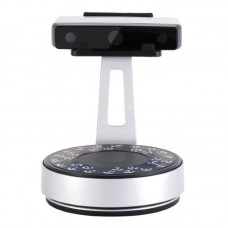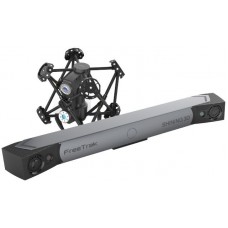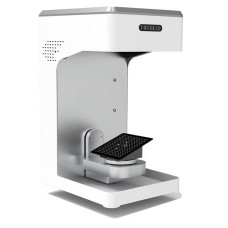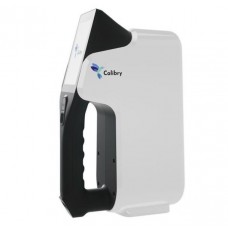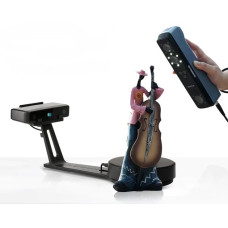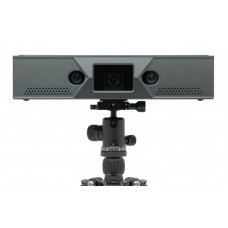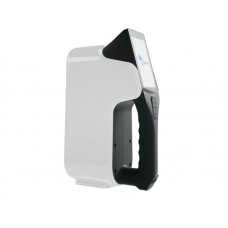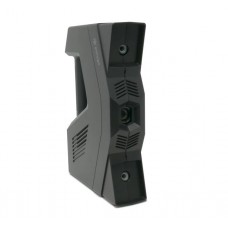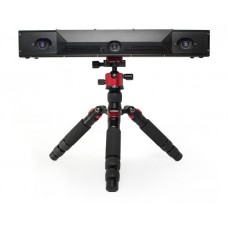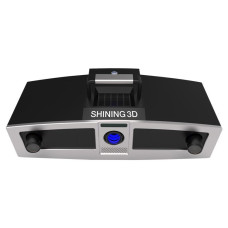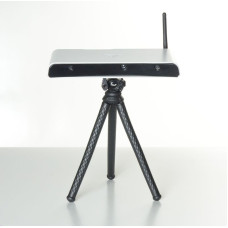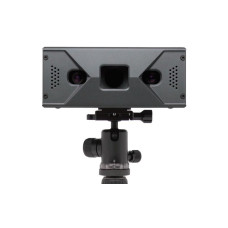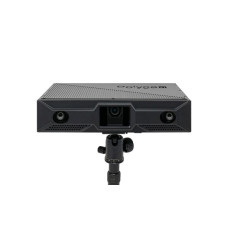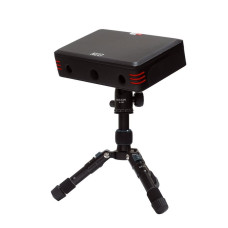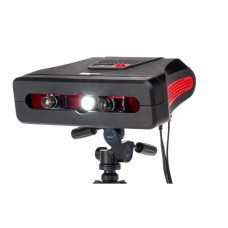3D Scanners
- 1
- 2
What are 3D Scanners and how do they work?
3D scanners are devices that capture the shape and appearance of real-world objects. 3D scanners produce reliable digital 3D models. These devices collect data on the object's surface. The collected data typically forms point clouds or mesh representations.
What is 3D scanning technology?
3D scanning technology digitizes physical objects into accurate 3D models. This technology employs various methods to capture an object's geometry. The main methods include laser triangulation, structured light, and time-of-flight measurements. Each method has unique advantages for different scanning scenarios.
How do different types of 3D scanners function?
Different types of 3D scanners function based on distinct principles. The four main types of 3D scanners are listed below.
- Laser Triangulation Scanners: Project a laser line onto the object. Use a camera to capture its deformation. Calculate distances through triangulation.
- Structured Light Scanners: Project known light patterns onto the object. Analyze their deformation to determine the object's shape.
- Time-of-Flight Scanners: Emit laser pulses. Measure the time taken for the light to return. Calculate distances based on the speed of light.
- Photogrammetry: Use multiple photographs taken from different angles. Reconstruct 3D models through software analysis.
What are the components of a 3D scanning system?
A typical 3D scanning system consists of five main components. These components work together to create accurate 3D models, and are listed below.
- Light Source: Laser or structured light projector
- Sensor: Camera or other light-detecting device
- Positioning System: Tracking markers or inertial measurement units for handheld scanners
- Data Processing Unit: Software that converts raw scan data into 3D models
- Output Interface: To view and export the resulting 3D models
Handheld and portable 3D scanners have gained popularity in recent years. These scanners offer flexibility and ease of use. Users can scan objects of various sizes with handheld scanners. Portable scanners function in different environments. The versatility of these scanners makes them suitable for a wide range of applications. Industries such as manufacturing, healthcare, and archaeology utilize handheld and portable 3D scanners extensively.
What types of 3D scanners are available in the market?
The 3D scanning market offers various types of scanners based on technology and form factor. These scanners are designed for specific applications and object sizes.
Scanner Types Based on Technology:
- Laser triangulation scanners
- Structured light optical 3D scanners
- Time-of-flight scanners
- Photogrammetry-based scanners
Scanner Types Based on Form Factor:
- Handheld scanners
- Desktop scanners
- Stationary scanners
- Portable scanners
Application-Specific Scanners:
- Industrial 3D scanning solutions
- Metrology-grade 3D scanning devices
- Professional 3D scanners
- Consumer-grade 3D scanners
How do handheld and portable 3D scanners differ?
Handheld and portable 3D scanners are designed for flexibility and ease of use. Here's how they differ.
- Handheld scanners: Held by the operator and moved around the object to capture data. They typically capture medium to large objects, starting from 10 cm in size.
- Portable scanners: Can be easily transported but may also include stationary setups. They often offer higher data capture rates, with some models collecting up to 1.3 million measurements per second.
Examples:
- Handheld scanners: Artec Eva, Artec Leo
- Portable scanners: Creaform HandySCAN Black Elite
What are the features of desktop 3D scanners?
Desktop 3D scanners are designed for scanning smaller objects with high precision. Key features are listed below.
- Compact size for scanning objects smaller than a fist
- High accuracy, with some models achieving precision up to 10 microns
- Automated 3D scanning processes
- Ability to capture intricate details
- Suitability for objects with reflective surfaces
Example: The Artec Micro is a desktop 3D scanner featuring a dual-axis rotation system for automated scanning. It is suitable for scanning small industrial parts, jewelry, and dental components.
How do metrology-grade 3D scanners compare to standard models?
Metrology-grade 3D scanning offers superior accuracy and reliability compared to standard models. They adhere to strict industry standards for accuracy and repeatability. Key differences include:
- Accuracy: Metrology-grade scanners provide accuracy ranges between 0.050mm and 0.005mm
- Resolution: High-resolution capabilities, with some models offering up to 0.1 mm resolution
- Consistency: More reliable and consistent measurements, independent of the operator
- Application: Used in industries requiring high precision, such as aerospace and automotive manufacturing
Example: The Artec Space Spider is a metrology-grade 3D scanner offering high resolution of up to 0.1 mm, capturing fine details and complex geometries. Metrology-grade scanners are essential for industries where high precision and accuracy are critical.
What are the applications and industries for 3D scanners?
3D scanners have widespread use across various industries. These industries utilize 3D scanning technology for capturing accurate digital representations of physical objects. The main industries using 3D scanning technology include manufacturing, aerospace, automotive, medical, and art preservation.
How is 3D scanning used in reverse engineering?
Reverse engineering is a significant application of 3D scanning technology. 3D scanning simplifies reverse engineering by quickly capturing complex geometries.
This process involves three main steps.
- Scan the existing part or assembly to create a digital 3D model
- Convert the scanned data into a Computer-Aided Design (CAD) model
- Analyze and modify the CAD model to improve or replicate the design
The automotive industry frequently uses 3D scanning for reverse engineering. Manufacturers can produce replacement parts when original CAD data is unavailable. They scan original bumpers or spoilers to capture mount points and clearance areas. This scanning ensures perfect fit for aftermarket parts.
What role do 3D scanners play in quality control?
3D scanners have revolutionized quality control processes in manufacturing. These scanners offer several advantages in quality control.
- Automated comparison of scanned parts to original CAD models
- Rapid inspection of large volumes of products
- Increased accuracy and reliability compared to manual measurements
- Ability to detect minute deviations and defects
The aerospace industry uses 3D scanning for quality control at various scales. 3D scanning inspects individual components like bolts using X-ray Computed Tomography (CT) scanning. X-ray CT scanning detects cracks and pores in these components. 3D scanning also performs full exterior scans of vehicles for aerodynamic testing. This technology allows for the development of virtual models. Virtual models enable digital testing and analysis of highly accurate data in the aerospace industry.
How are 3D scanners utilized in industrial and professional settings?
3D scanners have diverse applications in industrial and professional settings. The 5 main industries are listed below.
- Manufacturing: Prototyping, tooling, machining, and assembly processes
- Aerospace: Design, manufacturing, and maintenance of aircraft components
- Automotive: Development, production, and testing of vehicle parts
- Medical: Measuring and modeling human anatomy for diagnosis, treatment planning, and implant design
- Art and Preservation: Creating digital archives of historical artifacts and monuments
In industrial settings, 3D scanners offer four main benefits.
- Site Inspection: Light Detection and Ranging (LiDAR) scanners capture entire industrial sites in minutes. LiDAR scanners create 3D meshes for distance measurements and change detection.
- Feature Mapping: Scanners identify and measure complex layouts of wires or pipes. This mapping aids in planning new installations.
- Equipment Inspection: High-resolution scans enable detailed inspection reports. These scans detect defects on industrial equipment.
- Quality Control: 3D scanners complement traditional Coordinate Measuring Machines (CMM) in quality control processes. While CMMs provide highly accurate 3d measurements for simple geometries, 3D scanners excel at capturing complex shapes and generating comprehensive 3d data.
The versatility of 3D scanning technology has made it an essential tool across various industries. 3D scanning improves efficiency, accuracy, and innovation in design, manufacturing, and quality control processes.
What features and capabilities should you look for in a 3D scanner?
Several key features and capabilities should be considered when selecting a 3D scanner. These features ensure the device meets specific project requirements and delivers optimal performance.
How important is accuracy in 3D scanning?
Accuracy is crucial in 3D scanning. It is especially important for applications such as quality control, reverse engineering, and precise measurements. The importance of accuracy varies depending on the specific use case.
3D scanners offer different levels of accuracy. Handheld structured-light 3D scanners typically capture surfaces with 0.01-1.0 mm accuracy. Desktop solutions like Artec Micro II can achieve accuracy up to 0.005 mm (5 microns). Artec Micro II provides high precision for small object scanning.
Accuracy requirements differ across applications. Sub-millimeter accuracy is essential for reverse engineering. It generates a mesh close enough to the original for 3D modeling. In industrial applications, accuracy of 0.1 mm can be sufficient. This level of accuracy works well for tasks like scanning airplane parts for reverse engineering.
Accuracy measurement involves comparing scanned data to reference measurements. All measurements have some level of uncertainty. Accuracy is often expressed as a range rather than an absolute value.
What are the benefits of full-color scanning?
Full color scanning offers several advantages over black-and-white or intensity-level scans. The 5 main benefits are listed below.
- Enhanced visualization of scanned objects
- Improved identification of components
- Better representation of lighting conditions
- Easier remote collaboration
- Accurate texture capture
Color scans are easier to interpret, especially in complex environments. They allow for easier identification in facilities with color-coded systems, such as pipes. Color scans provide a more accurate "sense of place," which is particularly valuable in historical preservation projects.
Full-color scanning enables more effective remote collaboration. It provides a near true-to-life 3D scanning experience for remote team members. Color information helps in capturing material textures. This feature is crucial for CGI modeling and creating realistic representations.
How do scanner speed and sensitivity affect performance?
Scanner speed and sensitivity are critical factors that influence overall performance. These factors impact the quality and efficiency of the scanning process.
Speed in 3D scanning affects productivity.
- Faster scan speeds allow for processing more objects in less time
- High-speed scanning is crucial for high-volume environments
- Increased speed often comes at the cost of reduced detail or image quality
The Artec Leo offers a 3D reconstruction rate of 80 fps. This rate makes it one of the fastest professional handheld 3D scanners. Artec Leo's speed allows for efficient scanning of large objects or multiple items in a short time.
Sensitivity in 3D scanning impacts detail capture.
- Higher sensitivity enables the capture of finer details
- Increased sensitivity improves performance in challenging lighting conditions
- Higher sensitivity can lead to more noise in the scanned data, especially at higher resolutions
Some scanners are optimized for capturing complex geometries of small objects. The Artec Space Spider demonstrates high sensitivity to detail. It excels in scanning intricate small-scale objects with high precision.
The trade-off between speed and quality is a key consideration in 3D scanning. High-resolution scans typically require slower scanning speeds. The Artec Leo's AI-powered HD Mode offers 0.1 mm resolution but requires slower scanning. Rapid scanning technologies prioritize speed over detail. This approach is suitable for high-volume document management but may not be ideal for applications requiring fine detail.
In conclusion, balancing accuracy, color capability, speed, and sensitivity is essential when selecting a 3D scanner. The choice between these features depends on factors such as the size and complexity of scanned objects, the required level of detail, and the volume of scanning to be performed.
What is involved in the 3D scanning process and workflow?
The 3D scanning process involves 10 key steps to convert physical objects into digital 3D models. These steps are listed below.
- Calibrate the scanner
- Apply scanning spray to the object, if scanning a reflective or transparent surface.
- Scan the object
- Align multiple scans
- Fuse aligned scans
- Generate mesh
- Apply textures
- Edit and repair
- Simplify the model
- Export the final model
Calibration ensures accurate measurements. Use a standard target object to register the device and software settings. Scanning captures the object's surface data. Perform multiple scans from different angles to capture all surfaces. The bottom of an object often requires a separate scan with the object reoriented.
Alignment combines multiple scans by matching corresponding points. Fusion merges the aligned scans into a single point cloud. Meshing transforms the point cloud into a surface model composed of triangular faces. Apply texturing to add color and surface detail to the mesh.
Editing and repair are necessary to improve the model quality. Fill holes, remove artifacts, and smooth rough areas during this step. Simplify the model to reduce file size before exporting in the desired format.
How does the scanning experience differ between models?
The scanning experience varies depending on the type of 3D scanner used. Three main types of 3D scanners are listed below.
- Handheld scanners
- Stationary scanners
- Large-scale scanners
Handheld scanners require manual operation. Move the device around the object to capture its surface. Stationary scanners often use turntables for automatic object rotation. Large-scale scanners, used for buildings or landscapes, may require multiple repositionings.
Scanning speed and resolution differ between models. High-end scanners offer lightning-fast data capture, with some models capturing millions of points per second. Entry-level devices may be slower and less detailed. Some scanners provide real-time feedback. They show scanned areas on a connected display. This feature ensures complete coverage of the object's surface.
What software is used in 3D scanning and data processing?
3D scanning software falls into two main categories: Scanning control software and Data processing software. Scanning control software is often proprietary and specific to each scanner model. It manages the scanning process, calibration, and initial data capture. Data processing software can be either proprietary or third-party.
The 5 main data processing software packages are listed below.
- Geomagic Design X
- Artec Studio
- Polyworks
- Meshlab (open-source)
- CloudCompare (open-source)
These software tools handle tasks such as point cloud alignment, mesh creation, hole filling, and surface smoothing.
How are 3D scans converted into usable 3D models or CAD files?
Converting 3D scans into usable models involves 4 main steps:
- Process the point cloud
- Generate the mesh
- Edit the mesh
- Convert to CAD
Point cloud processing involves aligning and merging multiple scans into a single point cloud. Mesh generation creates a surface model from the point cloud. Mesh editing includes filling holes, removing artifacts, and smoothing surfaces. CAD conversion transforms the mesh into parametric CAD models.
For reverse engineering applications, the process includes 3 additional steps:
- Recognize features
- Create sketches
- Build parametric models
Feature recognition identifies geometric primitives like planes, cylinders, and spheres. Sketch creation generates 2D sketches from cross-sections of the 3D model. Parametric modeling builds a fully editable CAD model based on the recognized features and sketches.
The conversion process requires manual intervention for complex geometries. Export the resulting CAD files in various formats. Common formats include STEP, IGES, or native CAD formats like SolidWorks or AutoCAD.
The accuracy of the final model depends on three main factors:
- Scanner resolution
- Object complexity
- Operator skill in scanning and post-processing
How do object sizes and types influence scanner selection?
Object size and complexity determine the appropriate 3D scanner selection. Different scanners are optimized for specific size ranges and surface characteristics. These optimizations affect the accuracy and resolution of the resulting 3D models.
Which scanners are best for small, complex objects?
High-resolution desktop and handheld scanners are most suitable for small, complex objects. There are 3 main 3D scanners in this category.
- EinScan Pro 2X Plus with Industrial Pack is a desktop scanner designed for small objects. It has a single scan range of 208 × 136 × 136 mm to 312 × 204 × 204 mm. The accuracy of EinScan Pro 2X Plus with Industrial Pack reaches up to 0.04 mm. This accuracy makes it ideal for scanning items such as jewelry, electronic components, and small mechanical parts.
- FreeScan Trio is a handheld scanner optimized for small to medium-sized objects. FreeScan Trio can scan objects with high precision. It offers a resolution of 0.01 mm and accuracy up to 0.02 mm when using markers. These specifications make it suitable for capturing complex geometries like Printed Circuit Boards (PCBs), small tools, and archaeological artifacts.
- Polyga S5 Macro specializes in extra small parts. Polyga S5 Macro offers 5 micron accuracy and a point-to-point distance of 0.031 mm. This scanner is particularly useful for items like spark plugs, connectors, and coins.
What solutions exist for scanning large or massive objects?
Long-range scanners and portable handheld devices are most effective for large to massive objects. Key solutions include:
- Capturing large-scale objects
- Scanning from a distance
- Creating comprehensive 3D models
Artec Ray II is a long-range laser 3D scanner designed for objects starting from 1 meter in size. Artec Ray II can capture data from up to 130 meters away. This capability makes it suitable for scanning airplanes, vehicles, and industrial equipment.
Artec Leo is a handheld scanner for medium to large objects, starting from 10 cm. Artec Leo features a large field of view and can capture up to 3 million points per second. These features make it ideal for scanning auto bodies, furniture, and room interiors.
For non-industrial objects such as art, furniture or human body, EinScan H employs Vertical-Cavity Surface-Emitting Laser (VCSEL) technology. VCSEL offers improved accuracy and stability compared to traditional light sources, enabling precise 3D measurements over surfaces up to 4 m. Additionally, since it doesn't emit white light, it doesn't cause discomfort for the eyes.
Light Detection and Ranging (LiDAR) scanners are particularly useful for capturing entire industrial sites. LiDAR scanners create 3D meshes for distance measurements and change detection.
How do scanners handle objects with intricate surfaces?
Scanners use various technologies to capture objects with complex and intricate surfaces such as a motorcycle exhaust system. There are four main methods for handling complex surfaces:
- Employ structured light technology
- Utilize multiple scanning angles
- Implement high-resolution sensors
- Apply specialized software
Structured Light Technology is used by scanners like the Artec Space Spider. These scanners use blue light to project patterns onto the object's surface. This technology allows for capturing complex geometries, sharp edges, and thin ribs with high accuracy.
Multiple Scanning Angles are utilized by devices like the Artec Micro. These scanners use automated rotation systems to capture objects from various angles. This approach ensures all intricate details are recorded.
High-Resolution Sensors are employed in scanners such as the ATOS 5. ATOS 5 offers point-spacing down to 0.0236mm. This high resolution allows for the capture of fine details on complex surfaces.
Specialized Software uses pattern-recognition and reconstruction algorithms. These algorithms accurately recreate complex surface geometries from the captured data.
High-quality scanners like the ATOS Q can capture precise details on challenging surfaces. ATOS Q handles shiny or translucent materials without requiring surface modifications. This capability is crucial for scanning high-value components where surface alterations are not permissible.
The selection of a 3D scanner should be based on the specific size range and surface complexity of the objects to be scanned. High-resolution desktop or handheld scanners are ideal for small, intricate objects. Large objects require long-range or portable solutions. Capturing complex surfaces accurately depends on advanced scanning technologies and software capabilities, regardless of object size.
Why is scanning quality and precision crucial?
Scanning quality and precision directly impact the accuracy and usability of resulting 3D models. High-quality, precise scans are essential for applications in various industries. These industries include manufacturing, engineering, healthcare, and cultural heritage preservation.
What defines a high-quality 3D scan?
A high-quality 3D scan is characterized by several key factors. These factors contribute to the overall accuracy and usefulness of the scan:
- Accuracy of dimensional representation
- Resolution of captured details
- Completeness of surface capture
- Low noise in scan data
- Fidelity of color and texture
Accuracy in 3D scans refers to how closely the scan represents the true dimensions of the physical object. Professional-grade scanners are highly accurate, often achieving precision up to 0.005 mm (5 microns). Resolution determines the level of detail captured in the scan. Higher resolution scans can capture finer details. Some scanners offer point-to-point distances as low as 0.04 mm.
Completeness ensures the scan captures all surfaces of the object without significant data gaps or holes. Low noise results in clean scan data with minimal artifacts or distortions. Color and texture fidelity is crucial for scanners with color capture capabilities. These scanners accurately represent the object's surface appearance.
How do professional-grade scanners ensure precision?
Professional-grade scanners employ several techniques to ensure precision. These techniques include:
- Implement advanced sensor technology
- Perform regular calibration
- Utilize multiple scanning angles
- Provide real-time feedback
- Incorporate environmental compensation
Advanced sensor technology improves data capture accuracy. High-resolution cameras and precise light projection systems are used. The Artec Space Spider uses blue light technology for enhanced precision. Artec Space Spider's blue light technology allows for more accurate surface measurements.
Regular calibration of the scanner ensures consistent and accurate measurements. Many professional scanners include built-in calibration procedures. These procedures maintain the scanner's accuracy over time.
Multiple scanning angles ensure complete coverage and reduce errors. Scanners like the Artec Leo capture data from various angles. Artec Leo's multi-angle scanning capability provides a more comprehensive 3D model.
Real-time visual feedback allows operators to identify and address issues during the scanning process. Many professional scanners offer this feature. This immediate feedback improves the overall quality of the scan.
Environmental compensation maintains accuracy in challenging conditions. Some scanners, like the ATOS series, incorporate environmental vibration detection. ATOS scanners adjust for environmental factors to maintain high precision.
What techniques are used to capture fine details?
Professional 3D scanners are engineered to capture fine details, utilizing advanced technologies and precision optics These techniques include:
- Structured light projection
- Blue light technology
- High-resolution sensors
- Multiple scan modes
- Photogrammetry integration
Structured light projection creates highly detailed 3D models. Scanners project precise patterns of light onto the object's surface. The deformation of these patterns is analyzed. This technique is used in scanners like the Artec Space Spider and ATOS Q.
Blue light technology allows for more precise measurements. Blue light has a shorter wavelength than white light. It performs better on reflective or dark surfaces. This technology enhances the scanner's ability to capture fine details.
High-resolution sensors capture more detail. Professional scanners use high-megapixel cameras. For instance, the OptimScan 5M Plus uses three sets of 5-megapixel cameras. These high-resolution sensors contribute to the scanner's ability to capture minute details.
Multiple scan modes offer flexibility in detail capture. Scanners like the FreeScan UE11 provide different scanning modes. FreeScan UE11 offers global scanning with 26 laser lines and fine scanning with 7 parallel blue laser lines. These modes allow for varying levels of 3D measurements and are less sensitive to environmental factors like vibration or changing light conditions, ensuring consistent performance across various settings.
Photogrammetry integration enhances overall accuracy and detail capture. Some scanners combine 3D scanning with photogrammetry techniques. This combination improves the quality and precision of the resulting 3D model.
The importance of capturing fine details is evident in various applications. In reverse engineering, accuracy down to 0.1 mm can be crucial. This level of accuracy is necessary for tasks like scanning airplane parts. In cultural heritage preservation, capturing submillimeter details is essential. These fine details accurately document and preserve artifacts.
The quality and precision of 3D scans are fundamental to their usefulness across various industries. Professional-grade scanners employ a combination of advanced hardware and sophisticated software algorithms. These scanners also use specialized techniques to ensure high accuracy, resolution, and detail capture. As technology advances, we can expect even greater levels of precision and quality in 3D scanning. These advancements will open up new possibilities for applications in fields ranging from industrial design to medical imaging.
Which brands and products are leading the 3D scanning market?
Several key players lead the 3D scanning market. These players include Shining3D, Artec3D, Creaform, FARO Technologies, 3D Systems, and Revopoint. Each company offers a range of products. These products cater to various industries and applications.
What makes Shining3D a global leader in scanning technology?
Shining3D has established itself as a global leader in 3D scanning technology. Shining3D's leadership is based on five main factors:
- Development of key technologies
- Extensive industry experience
- Wide product range
- Global presence
- Strong intellectual property portfolio
Shining3D has developed key technologies in LED light 3D scanners. The company has also innovated in portable 3D laser scanners and automated high-precision 3D visual inspection. Shining3D has accumulated significant expertise in 3D digitizing technology over 19 years in the industry.
The product range of Shining3D includes handheld, desktop, and laser scanners. These scanners cater to various industry needs. Shining3D operates subsidiaries in Germany, the United States, and China. This global presence allows the company to serve a worldwide customer base.
Shining3D's commitment to innovation is evident in its intellectual property. The company has over 300 authorized patents. It also holds over 100 software copyrights.
How do other brands like Artec3D compare in the market?
Artec3D is another prominent player in the 3D scanning market. Artec3D is known for its high-quality scanners and software. The company's market position is based on four key factors:
- Diverse product range
- Innovative software
- High accuracy
- Industry recognition
Artec3D offers a variety of scanners. The Artec 3D scanners include the Artec Leo, Eva, and Space Spider. Each scanner caters to different object sizes and applications. Artec Studio, the company's proprietary software, receives annual updates. These updates include new features and improvements, enhancing the performance of existing hardware.
Artec3D scanners are known for their high accuracy. The Artec Space Spider achieves accuracy up to 0.05 mm. This level of accuracy is crucial for precise 3D modeling and measurement applications.
The industry has recognized Artec3D's contributions. The company was named the Best 3D Scanning & Metrology Company in 2019 by 3D Printing Industry. This recognition underscores Artec3D's position as a leader in the 3D scanning market.
What unique features do different scanner models offer?
Three leading 3D scanner models offer unique features. These models are the Freescan Trio, Creaform Handyscan 3D Black Elite, and Artec Leo. The following table compares their key specifications:
| Feature | Freescan Trio | Creaform Handyscan Black Elite | Artec Leo |
|---|---|---|---|
| Accuracy | Up to 0.02 mm | Up to 0.025 mm | Up to 0.1 mm |
| Resolution | Up to 0.015 mm | Up to 0.025 mm | Up to 0.2 mm |
| Scanning Speed | Up to 3,010,000 points/s | Up to 1,300,000 measurements/second | Up to 80 fps |
| Portability | Handheld | Handheld | Handheld and fully wireless |
| Recommended Object Size | 0.03 - 4 m | 0.05 - 4 m | 0.2 - 3 m |
| Requires Markers | No | Yes | No |
| Price | $35,000 | $54,900 | $29,800 |
Each of these scanners offers unique features for specific applications:
- High scanning speed and accuracy
- Balance of accuracy and speed
- Wireless operation with onboard processing
The Freescan Trio stands out with its high scanning speed and accuracy. These features make it suitable for detailed industrial applications. The Creaform Handyscan Black Elite offers a balance of accuracy and speed. This balance focuses on quality control and product development. The Artec Leo provides fully wireless operation with onboard processing. This feature offers unparalleled ease of use and mobility for a wide range of applications.
These leading brands and their innovative products drive advancements in 3D scanning technology. They cater to diverse industry needs with high-accuracy, versatile solutions. The continuous development of these technologies ensures improved scanning capabilities for various applications in the future.
How is the 3D scanning industry evolving?
The 3D scanning industry experiences rapid growth and technological advancements. The global 3D scanning market is projected to grow significantly. MarketsandMarkets reports that the market will expand from USD 1.98 billion in 2024 to USD 7.16 billion by 2034. This growth represents a compound annual growth rate (CAGR) of 13.72%.
What are the latest advancements in 3D scanning technology?
Recent advancements in 3D scanning technology include five main areas:
- Improved accuracy and resolution
- Increased scanning speed
- Integration with artificial intelligence
- Development of portable devices
- Implementation of cloud-based processing
Modern 3D scanners achieve accuracies up to 0.015 mm. This level of accuracy enables the capture of fine details in various applications. High-end scanners now capture up to 3,010,000 points per second. This increased speed significantly reduces scanning time for large objects.
Artificial Intelligence (AI) enhances 3D scanning capabilities. AI algorithms automate data processing, enhance geometric reconstruction, and improve object detection. The development of lightweight, portable scanners has expanded the use of 3D scanning in field applications. Cloud technologies enable easier data sharing and collaboration among distributed teams.
How are industry leaders shaping the future of 3D scanning?
Industry leaders drive innovation in 3D scanning through four main approaches:
- Invest in research and development
- Integrate with emerging technologies
- Expand application areas
- Improve software capabilities
Companies like Artec3D and Shining3D invest heavily in research and development. Artec3D focuses on improving scanner accuracy, speed, and usability. Shining3D develops new technologies for various industries. These investments lead to continuous improvements in 3D scanning technology.
Industry leaders incorporate AI, machine learning, and Internet of Things (IoT) capabilities into their scanning solutions. This integration enhances the functionality and versatility of 3D scanners. Leaders develop specialized scanners for sectors such as healthcare, aerospace, and automotive industries. These specialized scanners address unique industry requirements.
Software improvements remain a key focus for industry leaders. Companies enhance software capabilities for faster data processing and more accurate 3D model creation. These improvements streamline the 3D scanning workflow and increase overall efficiency.
What trends can we expect in 3D scanning for 2024 and beyond?
Six key trends shape the future of 3D scanning:
- Increased automation
- Integration with augmented and virtual reality
- AI-powered solutions
- Expansion in healthcare applications
- Integration with Industrial Internet of Things
- Advancements in autonomous vehicle technology
Automation in 3D scanning systems will increase. This increase reduces the need for human intervention and improves efficiency. 3D scanning technology integrates with augmented reality (AR) and virtual reality (VR) applications. This integration creates more immersive experiences in various industries.
AI-powered solutions in 3D scanning will grow. The use of deep learning and neural radiance fields to reconstruct 3D scenes from 2D images will expand. The healthcare segment is projected to experience rapid growth. 3D scanning will be used for patient anatomy analysis and customized medical device creation.
The Industrial Internet of Things (IIoT) will incorporate 3D scanning technology. This integration enables applications in smart packaging and quality control. 3D scanning technology will play a crucial role in improving obstacle detection systems. These systems will enhance self-driving cars and unmanned aircraft.
These advancements and trends indicate continued rapid evolution in the 3D scanning industry. The industry will offer more precise, efficient, and versatile solutions across various sectors in the coming years.
How to choose the right 3D scanner for your needs
Selecting the appropriate 3D scanner requires careful consideration of several factors. These factors ensure the scanner meets specific requirements and provides optimal performance for intended applications.
What factors should you consider when selecting a 3D scanner?
Consider the following eight key factors when choosing a 3D scanner:
- Determine the object size for scanning
- Assess the required accuracy level
- Consider the needed resolution
- Evaluate the scanning speed
- Decide on portability requirements
- Check surface material compatibility
- Ensure software compatibility
- Balance cost with required features
Object size is crucial for scanner selection. Different scanners are optimized for various size ranges. Accuracy is essential for precise projects. Professional-grade scanners can achieve accuracies up to 0.005 mm.
Resolution determines the level of detail in scans. Higher resolution captures finer details but may increase processing time. Scanning speed is important, especially for large objects or high-volume scanning. The scanner's data capture rate affects overall efficiency.
Portability is a key consideration. Determine if you need a handheld device for on-site scanning or a stationary unit for controlled environments. Surface materials affect scanning quality. Check the scanner's capability to capture different textures and reflective surfaces.
Software compatibility ensures smooth workflow integration. Ensure the scanner works with your existing software ecosystem or provides suitable software for your needs. Budget considerations are important. Balance the cost with the required features and performance to make an informed decision.
The Artec Space Spider offers high accuracy for small to medium-sized objects. It achieves accuracy up to 0.05 mm. The Artec Ray II, in contrast, can scan large objects up to 130 meters away.
How do professional solutions differ from consumer-grade options?
Professional 3D scanners differ significantly from consumer-grade options in six main aspects:
- Higher accuracy and precision
- Superior build quality
- Advanced software capabilities
- Faster scanning speed
- Greater versatility
- Comprehensive support and training
Professional scanners offer higher accuracy, often within microns. Consumer devices typically provide millimeter-level accuracy. The build quality of professional scanners is superior. They use more durable materials and components, designed for industrial use and longevity.
Software capabilities differ significantly. Professional solutions come with advanced software for data processing, mesh optimization, and integration with Computer-Aided Design (CAD) systems. Scanning speed is a crucial differentiator. High-end scanners can capture millions of points per second, significantly faster than consumer-grade options.
Professional scanners offer greater versatility. They often handle a wider range of object sizes and surface materials. Support and training are comprehensive for professional solutions. They typically include extensive support, training, and sometimes on-site installation.
The Creaform HandySCAN BLACK Elite exemplifies professional-grade scanning capabilities. It offers accuracy up to 0.025 mm and captures up to 1,300,000 measurements per second. Consumer-grade scanners, in comparison, may have accuracies around 0.1 mm or lower and significantly slower capture rates.
What support and resources are available for new 3D scanner users?
New 3D scanner users can access seven types of support and resources to enhance their scanning experience:
- Manufacturer training programs
- Comprehensive user manuals and guides
- Online tutorials and webinars
- Community forums
- Dedicated technical support
- Regular software updates
- Access to application specialists
Manufacturer training is crucial for optimal scanner use. Many professional scanner manufacturers offer training programs. Artec 3D provides online and in-person training sessions for their products. These sessions cover scanner operation, software use, and best practices.
User manuals and guides offer detailed instructions. Comprehensive documentation is typically provided with professional scanners. These resources offer step-by-step guidance and best practices for various scanning scenarios.
Online tutorials and webinars provide flexible learning options. Companies like EinScan offer webinars and video tutorials. These resources cover various aspects of 3D scanning, from basic operations to advanced techniques.
Community forums facilitate knowledge sharing. Online communities and forums allow users to share experiences, troubleshoot issues, and exchange tips. These platforms create a collaborative environment for continuous learning.
Technical support ensures smooth operation. Professional scanner providers often offer dedicated technical support through phone, email, or live chat. This support helps users resolve issues quickly and maintain productivity.
Software updates improve functionality continuously. Regular software updates address user feedback and introduce new features. These updates ensure users have access to the latest scanning capabilities.
Application specialists provide expert guidance. Some companies provide access to application specialists who can offer advice on specific use cases. These experts help users optimize their scanning processes for particular industries or applications.
The Princeton University Library Makerspace demonstrates the importance of institutional support. They offer on-site assistance and tutorial videos for users of their 3D scanners. This support ensures students and faculty can effectively utilize 3D scanning technology in their projects.

![Einscan Rigil 3D Scanner [Promotion: Get Free Flashforge Adventurer 5M Pro 3D printer], photo Einscan Rigil 3D Scanner [Promotion: Get Free Flashforge Adventurer 5M Pro 3D printer]](https://top3dshop.com/image/cache/catalog/products/3d_scanners/shining_3d/rigil/einscan_rigil_promo-228x228.jpg)
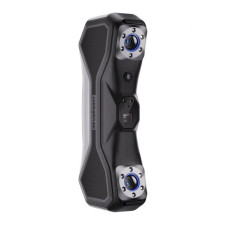
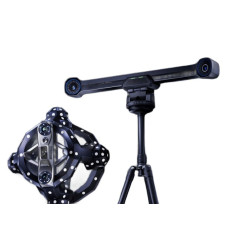
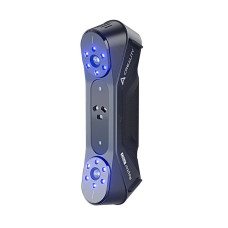
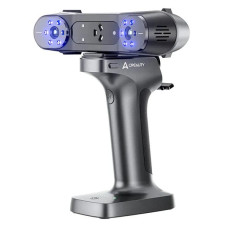
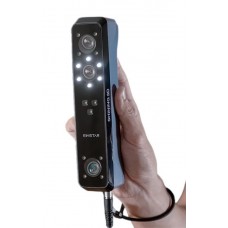
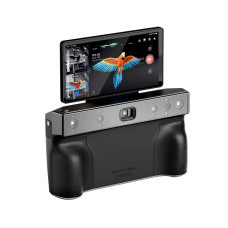
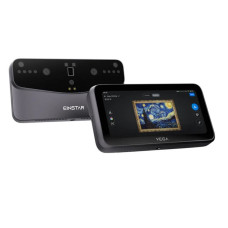
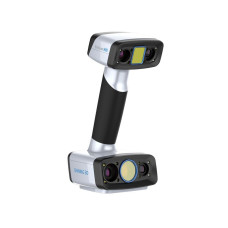
![Einscan HX 3D Scanner [1 x Aesub Spray for Free], photo Einscan HX | 3D Scanner from Shining 3D| Buy at Top 3D Shop](https://top3dshop.com/image/cache/catalog/products/3d_scanners/shining_3d/einscan_hx/einscan_hx_image6-228x228.jpg)
![Einscan Pro HD 3D Scanner [1 x Aesub Spray for Free], photo Einscan Pro HD | Shining 3D Scanner | Buy at Top 3D Shop](https://top3dshop.com/image/cache/catalog/products/3d_scanners/shining_3d/einscan_pro_hd/shining_einscan_pro_hd_3d_scanner_3-228x228.jpg)
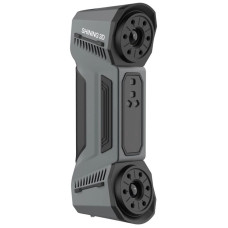
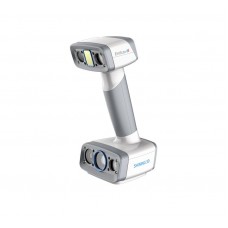
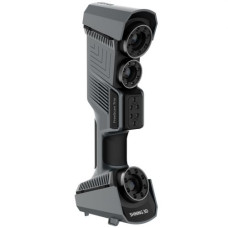
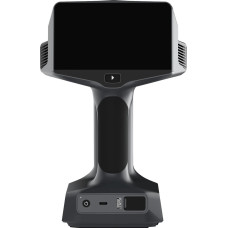
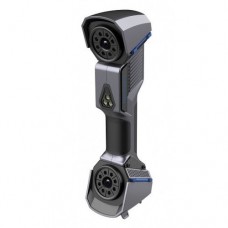
![Creality CR-Scan Raptor 3D Scanner [CLEARANCE], photo Creality CR-Scan Raptor 3D Scanner [CLEARANCE]](https://top3dshop.com/image/cache/catalog/products/3d_scanners/creality/cr_scan_raptor/cr_scan_raptor_image7-228x228.jpg)
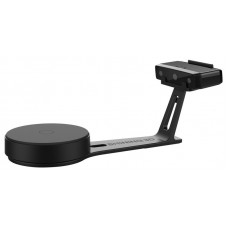
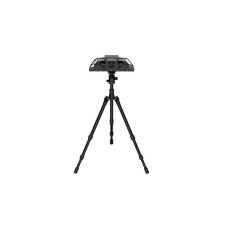
![Einscan Pro 2X 2020 / V2 3D Scanner [1 x Aesub Spray for Free], photo Einscan Pro 2X 2020 Handheld 3D Scanner Shining3D: price in USA](https://top3dshop.com/image/cache/catalog/products/3d_scanners/shining_3d/einscan_pro_2x/einscan_pro_2x_4734d382-228x228.jpg)
